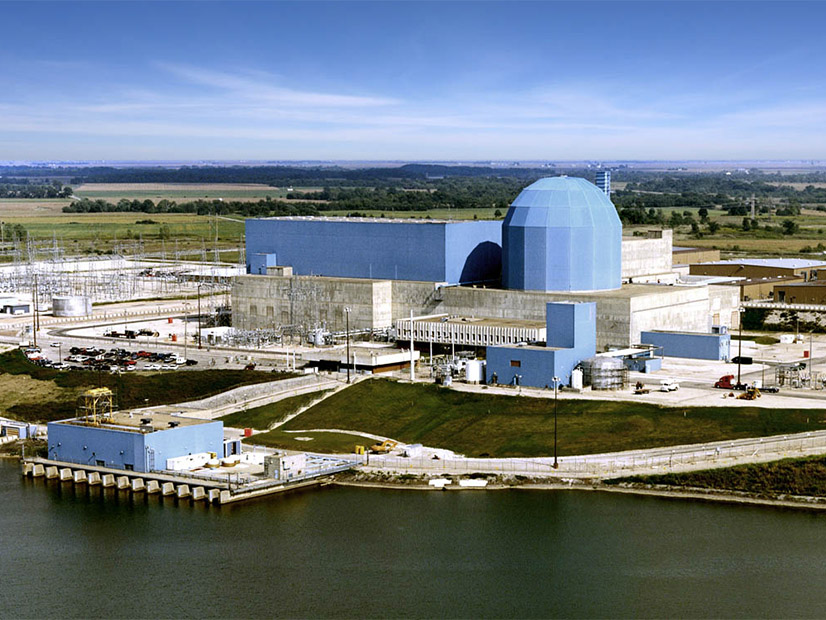
Constellation Energy Corp. is setting high financial goals for the rest of the decade, confident its mix of clean and reliable energy generation gives it an excellent market position amid renewed support for nuclear power.
The company reported strong 2023 financial results Feb. 27 and investors liked what they heard — its stock price closed 16.9% higher in heavy trading.
CEO Joe Dominguez focused heavily on Constellation’s nuclear fleet in a conference call with financial analysts.
Constellation also operates oil, gas, solar, wind and hydroelectric generation, but nuclear accounts for 60% of its installed capacity and 86% of its output — without emitting any zero greenhouse gases in the process.
Nuclear has the highest capacity factor of any power generation, Dominguez said, and Constellation has not only the largest but the best-performing nuclear portfolio in the nation, operating at a capacity factor of 94.6%.
This puts Constellation in an excellent position at a time of growing demand for electricity and a soaring desire for clean electricity. Combined with the nuclear production tax credit contained in the IRA, he said, Constellation can confidently predict consistent earnings growth for years to come.
“In the changing power markets, we provide something that I think others struggle to do, and that’s carbon-free energy and reliability together,” Dominguez said. “We think that’s going to be the bedrock of the future for the country.”
Part of this speaks to the intermittent nature of solar and wind compared with the fossil fuel generation they are replacing.
Constellation’s commercial-industrial customers are committed to renewables, Dominguez said, but they need power around the clock. Nuclear is a nonfossil resource dispatchable at scale when the sun does not shine or the wind does not blow.
Just in the PJM system, he said, the day-to-day swing in renewable generation can equal the output of five nuclear plants.
Dominguez noted another key factor in Constellation’s favor: growing bipartisan policy support for nuclear power, a longtime pariah for many on the left and some on the right because of its cost and the risks of radioactivity.
“Years ago, we couldn’t get customers to look at nuclear, regardless of its economics, its reliability or its environmental benefits, but that’s changed,” he said. “Once customers see what we can do from affordability and time-match perspective, they like it.”
Constellation said it holds a 21% share of the U.S. competitive commercial/industrial market, the most of any operator.
Which is not to say nuclear power is without problems.
The first commercial reactors built from scratch in the United States in decades — at Plant Vogtle in Georgia — are by some estimates the most expensive power generation ever built, coming online years behind schedule and many billions of dollars over budget.
Dominguez said this only makes a stronger business case for an existing fleet of well-run reactors.
“Our assets are the best in the world, run by the best people. This company can’t be replaced — there’s simply not enough nuclear out there to replace it. And we all know, from having seen Vogtle, what the cost of new nuclear is.”
In February, Constellation asked the Nuclear Regulatory Commission to extend its license for the Clinton Power Station in Illinois from 2027 to 2047.
The 1.08-GW plant came online in 1987. Actually running it until 2047 would depend on market and/or policy support, Constellation said when it announced the decision Feb. 15.
But Dominguez said Feb. 27 that age is not an issue — most of the fleet could run at least 40 more years. “I say ‘at least’ because we believe that some of our plants could actually run to a hundred years — much longer than existing wind and solar operating today and also longer than all the renewables that are being built right now.”
In mid-2023, Constellation twice raised the earnings guidance it offered financial analysts. The year-end results released Feb. 27 were higher yet.
Constellation reported 2023 GAAP net income of $1.62 billion, which compares with a 2022 loss of $160 million. It had a fourth-quarter 2023 loss of $36 million, compared with income of $34 million in the same period a year earlier.
Its market capitalization has been increasing steadily since Exelon completed its spin-off of Constellation. The share price is 194% higher than when it began trading in February 2022.


